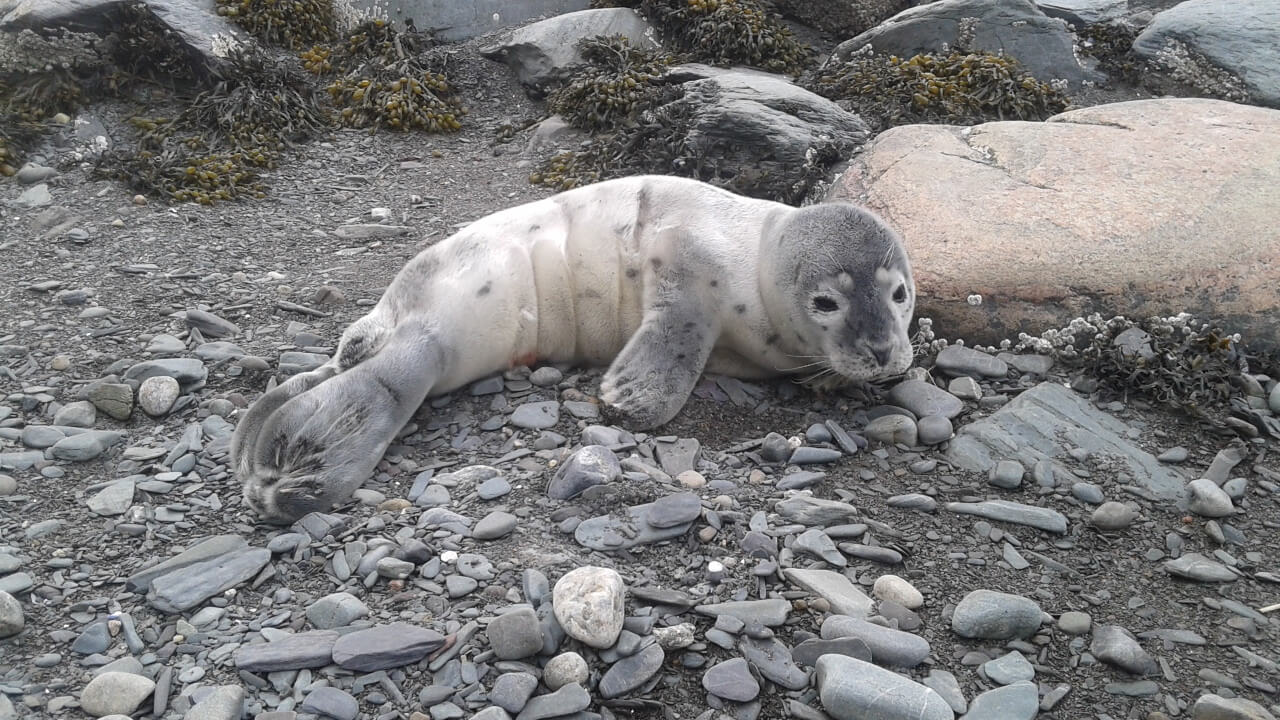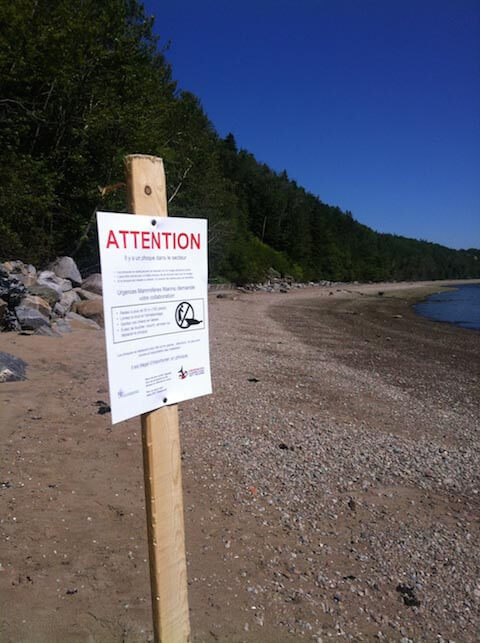If you see a young seal on the beach, let it rest. The months of May and June are pupping season for harbour seals, and females nurse for 4 to 6 weeks from May to early July. During this period, pups can often be seen alone on the beach while females return to the water to feed. Young seals may “whine” for their mothers, which is when they are sometimes mistaken for animals in distress. The Quebec Marine Mammal Emergency Response Network reminds us not to intervene, but rather to let the animal rest and let nature take its course.
Harbour seals are weaned between mid-June and late July. In order to concentrate their energy on growing and temperature regulation, seal pups often rest out of the water, sometimes on busy beaches. Though they might remain there for a few hours or even a few days, they should not be considered to be abandoned. Oftentimes, they are unaware of the various dangers lurching and don’t respond to an approaching human
For your well-being and that of the seal, Marine Mammal Emergencies requests that you respect nature and refrain from intervening with young seals
A seal touched by a human may be a doomed seal: pups that are handled by humans are often abandoned by their mothers. Because at this time of the year seal pups are not yet weaned and have not yet learned all they need to know to survive on their own, the loss of contact with their mothers can be fatal. In addition, a heavy human presence around the animal can prevent the female from returning.
What should you do if you see a young seal on the beach?
+ Keep your distance (at least 50 metres), and, ideally, leave the area so that the mother can return to the pup and the latter can rest. If the seal follows you, leave the area immediately.
+ Refrain from touching the seal, attempting to feed it, forcing it to return to the water or interacting with it in any manner; it is illegal to disturb any marine mammal.
+ Be cautious! Bear in mind that these are wild animals that are unpredictable and can become aggressive or bite. Even if they are small and often appear harmless and endearing, seals have teeth and can become aggressive when defending themselves.
+ Keep dogs on a leash. A dog left to roam free might approach the seal, increasing the latter’s stress levels and provoking aggressive reactions that might cause injury to your pet.
If a seal is constantly approached, it will not have the chance to rest or resume contact with its mother. “Repeated interactions with a seal can prevent the animal from resting, and the stress triggered by human presence can make the individual more prone to disease or predation,” explains veterinarian Stéphane Lair of the Centre québécois sur la santé des animaux sauvages and professor of Université de Montréal’s Faculty of Veterinary Medicine. “One must avoid the mindset whereby the young have been abandoned: human presence near the young frightens the mother, a seal left to fend for itself is concerning to local residents who try to help it by moving it or prodding it toward the water, which considerably reduces the chances that the female will return,”explains Dr. Lair.
A certain percentage of young seals die every year: these are natural mortalities and are part of the dynamics of a wild population. Marine Mammal Emergencies will not intervene in such situations, even though it is difficult to observe an emaciated animal. The animal will have a greater chance of survival if it is left alone.
When should one call Marine Mammal Emergencies at 1-877-7baleine?
Seals’ lives are split between the water and the land, where they come to rest. It is therefore completely normal to see a seal out of the water. Certain situations are problematic, however, and should be reported:
+ If you see a seal with obvious signs of injury;
+ If people are handling or attempting to interact with the seal;
+ If the seal is showing aggressive behaviour toward the public.
With a detailed description of the situation and assistance from a volunteer, the call centre team can request the collaboration of local responders to enforce the law, which prohibits handling a marine mammal, and thereby help ensure public safety. A veterinarian could also assess the animal’s state of health and decide to intervene if he or she feels it is necessary.
About the Quebec Marine Mammal Emergency Response Network
The Quebec Marine Mammal Emergency Response Network exists thanks to the involvement of a dozen or so private and governmental organizations and roughly one hundred volunteers. The Network is responsible for organizing, coordinating and implementing measures aimed at reducing accidental mortality of marine mammals, rescuing marine mammals in difficulty, and facilitating the acquisition of data from animals that have died in Quebec’s waters of the St. Lawrence.






